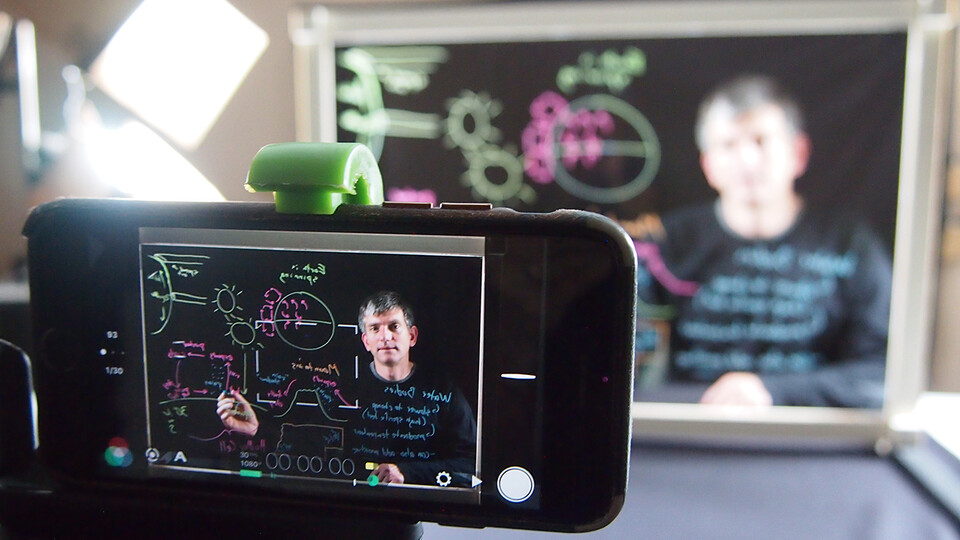
by Scott Schrage, University Communication
Chad Brassil settles into a chair behind the 4-foot-by-3-foot pane of reflection-limiting conservation glass that he purchased from a local hardware store.
The neon orange dry-erase marker in his right hand pops against his all-black outfit and the black cloth draped behind him, accentuated by two lamps that usually reside next to the basement TV. He looks through the glass toward his iPhone, jerry-rigged in place with a selfie stick atop a tripod.
For the next 10 minutes or so, Brassil will record himself explaining a key concept from Life Sciences 121, a University of Nebraska–Lincoln course dedicated to a few fundamentals of biology: ecology, evolution, the tree of life, the physiology of plants and animals.
“Looney Tunes had it right,” said the associate professor of biological sciences. “They figured out that the standard Bugs Bunny cartoon should be about seven-and-a-half minutes. That’s about my target for a lecture tidbit.”
Brassil is no cartoonist, but soon he’s putting marker to glass, doodling images and jotting keywords as he relays the lesson to his iPhone and, starting in mid-July, his students. Under normal circumstances, Brassil would be preparing to teach the five-week summer course on campus. When he got word that the university would continue its remote instruction until the fall in an effort to curb the spread of the novel coronavirus, he set out to do what he could with the time and resources available to him.
“We all wanted to go into the summer semester pedagogically prepared, instead of this whiplash that we experienced in the spring,” he said. “There was plenty of time to think: How can I take this class and make it the best online class that it can be?”
Inspired by YouTube and the university’s Center for Transformative Teaching, Brassil decided to try his hand at a learning glass: essentially just a transparent, well-lit whiteboard that lends itself to making science more illustrative, comprehensible and personal. Some companies sell LED-embedded versions for thousands of dollars. Brassil built his own for about $100.
Since then, he’s been recording bite-sized, illustrated lessons and, when he’s done, digitally flipping the video so that the writing and imagery won’t appear backward to the viewer. By uploading the recordings to Canvas and making them available during the three-credit course, Brassil is hoping to give his students a convenient, memorable study reference.
Read more:
https://news.unl.edu/newsrooms/today/article/through-the-learning-glass-brassil-illustrates-biology-concepts-with-markers/